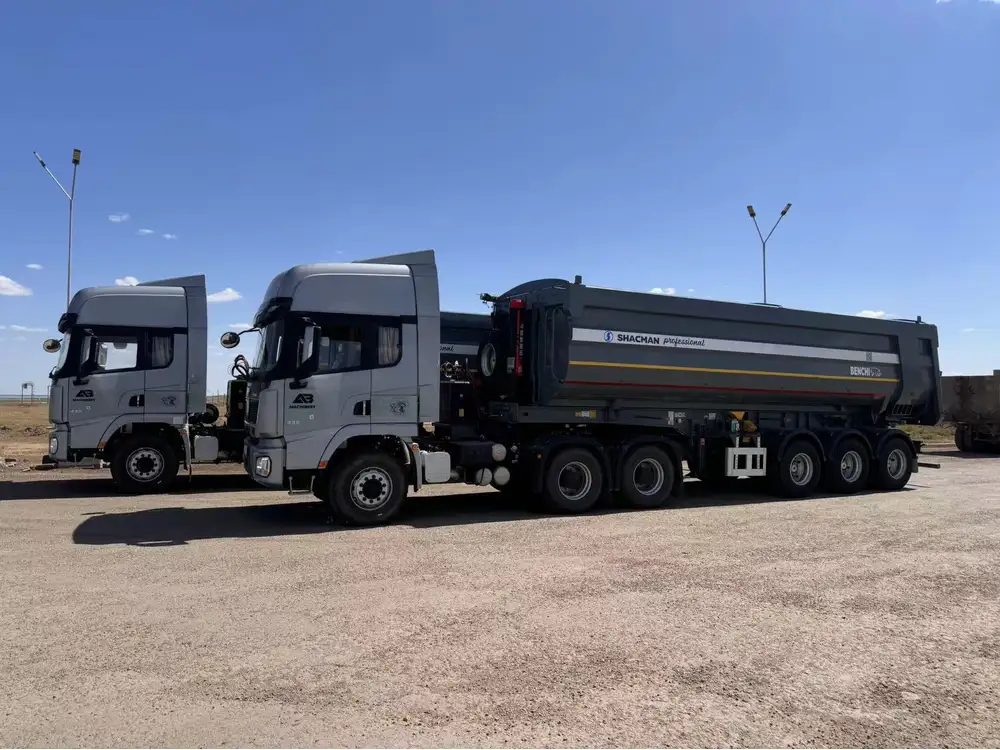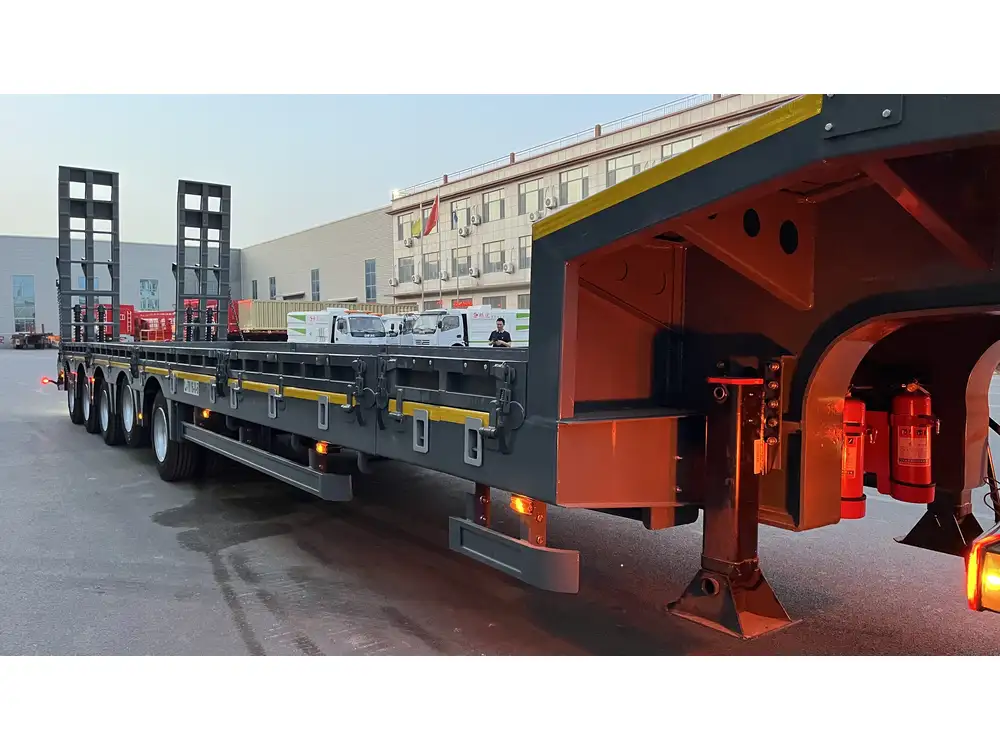When it comes to transporting goods efficiently and effectively, choosing the right trailer size for your semi-trailer is paramount. With the specifications of a 39x44x39 semi-trailer, which indicates its dimensions, understanding the best trailer type suited for this particular cargo can streamline your operations, reduce costs, and enhance safety during transit.
In this comprehensive guide, we explore the criteria for selecting the appropriate trailer size, examine the nuances of different types of trailers, and dissect the key factors influencing your choice.
Understanding Semi-Trailer Dimensions
Semi-Trailer Specifications
The dimensions provided—39 feet in length, 44 inches in width, and 39 inches in height—indicate that this semi-trailer is quite specialized. The dimensional specifics offer insightful data regarding the volume and weight capacities, which in turn dictate the necessary trailer configuration. To explore the nuances, let’s break these details down:
| Dimension | Measurement | Significance |
|---|---|---|
| Length | 39 ft | Determines the total cargo space available. |
| Width | 44 in (3.67 ft) | Impacts the type of cargo and loading/unloading processes. |
| Height | 39 in (3.25 ft) | Affects the stacking ability and weight distribution. |

Calculating Volume and Weight
Understanding the overall volume that this semi-trailer can accommodate is crucial for logistical planning. Volume can be calculated as:
- Volume (cubic feet) = Length x Width x Height
- Volume = 39 ft x 3.67 ft x 3.25 ft = 474.16 cubic feet
Identifying the maximum weight capacity is also essential. Generally, standard semi-trailers can transport between 20,000 to 45,000 pounds depending on regulations and trailer types. Thus, assess weight wisely to avoid overloading.
Selecting the Right Trailer Size
1. Types of Trailers
Based on the semi-trailer specifications, the following trailer types may suit your needs:

Flatbed Trailers
- Overview: These trailers lack side walls and roofs, offering versatility in accommodating various cargo types.
- Pros: Easy loading and unloading from any angle; ideal for large items that don’t require shelter.
- Cons: Less protection against environmental elements; may require additional tarping.
Enclosed Trailers
- Overview: Fully enclosed trailers provide protection from weather and are excellent for sensitive items.
- Pros: Enhanced security; better protection; lower risk of cargo damage.
- Cons: Limited accessibility for loading; potential overheat issues.
Refrigerated Trailers
- Overview: Designed specifically for temperature-sensitive cargo such as perishables.
- Pros: Temperature control for perishable goods; can transport frozen or chilled items.
- Cons: Higher operational costs; maintenance requirements for refrigeration systems.

2. Weight Considerations
The weight of your cargo will directly affect the trailer choice:
- Lightweight Loads: For items weighing less than 15,000 pounds, a lighter flatbed or enclosed trailer might suffice.
- Heavy Loads: Cargo exceeding 20,000 pounds would necessitate a sturdier high-capacity trailer, preferably with a reinforced structure.
Weight Distribution: Ensure that weight is evenly distributed over the trailer axles to maintain balance and stability.
3. Regulatory Compliance
Before making a decision, familiarize yourself with local and federal regulations regarding trucking loads. Some significant points to consider include:
- Length Limits: Each state has regulations governing the maximum allowable length for trailers. It’s vital to comply to avoid fines and operational delays.
- Weight Limits: Most states have gross weight limits for semi-trailers. Complying with these regulations can save you from serious legal repercussions.
- Permits: Oversized load permits may be required depending on the trailer setup and cargo type.
Factors to Consider in Trailer Selection

1. Cargo Type
Your choice of trailer should align with the specific needs of the goods being transported. Think about:
- Fragility: Glass and electronics require enclosed spaces for protection.
- Temperature Sensitivity: Food products may require a refrigerated trailer.
- Dimension Compliance: Ensure cargo dimensions can fit within the trailer space.
2. Accessibility Needs
Think about how frequently the cargo will need to be loaded and unloaded:
- Frequent Access: If you need constant access to your cargo, consider options that allow easier loading, such as a flatbed.
- Security: Enclosed trailers are necessary if high-value items are involved.
3. Route and Destination
The terrain and environment where you’ll be operating significantly affect your trailer choice:
- Urban Areas: Consider shorter trailers that can maneuver easily in city traffic.
- Rural Routes: Longer trailers may be suitable depending on road conditions.

Comparing Trailer Options
To provide a clear perspective, here’s a comparative table of the mentioned trailer types regarding the cargo size specified.
| Trailer Type | Max Length (ft) | Max Width (ft) | Max Height (ft) | Ideal Cargo Types | Considerations |
|---|---|---|---|---|---|
| Flatbed | 48 | 8.5 | Varies | Machinery, lumber, building materials | Open to elements; requires protection methods |
| Enclosed | 53 | 8.5 | 8.5 | Electronics, textiles, fragile items | Better security; heat management for sensitive items |
| Refrigerated | 53 | 8.5 | 8.5 | Perishable food, pharmaceuticals | Operational costs; service upkeep needed for chilling |
Conclusion: Tailoring Choices for Optimal Performance
Choosing the right trailer size for a 39x44x39 semi-trailer encompasses various factors: the cargo type, weight, dimensions, route specifications, and desired accessibility plays a pivotal role in your decision-making process. By thoroughly exploring the options—flatbed, enclosed, or refrigerated trailers—you position your business for greater efficiency, safety, and compliance.
In summary, when grappling with the query of what size trailer is necessary for a 39x44x39 semi-trailer, we conclude that matching trailer dimensions and types to cargo specifications will streamline your operations significantly, reduce costs, and enhance the security of your transport logistics. Stay informed, educated, and choose wisely to ensure your success in the transportation industry.
Emphasizing a detailed understanding of the challenges and must-know factors surrounding trailer choices will not only facilitate effective decision-making but will also resonate with your audience by addressing their core queries and logistical concerns. Stay tuned to our blog for more insightful content on semitrailer manufacturing and distribution!



